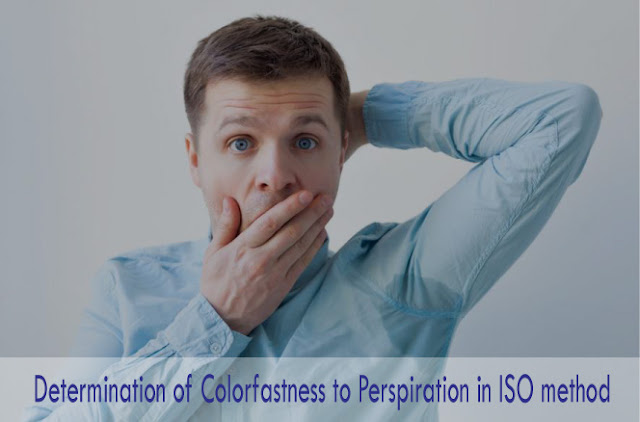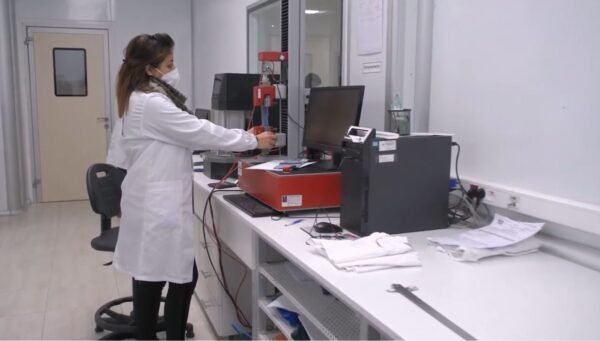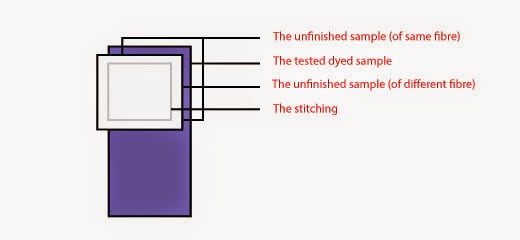Determination of Colorfastness to Perspiration in ISO Method
Last updated on July 18th, 2023 at 11:10 am
Colorfastness to Perspiration
The garments which come into contact with the body reference where perspiration is heavy (like neck, underarm, etc.) may suffer from local severe discoloration. The resistance to color of textile against the discoloration effect of acidic or alkaline perspiration is the colorfastness to perspiration.
Instruments and Materials Needed for Perspiration Test
- Acrylic glass plate (11.5 cm X 6.0 cm X 0.15 cm)
- Pressure weight
- Oven (Incubator)
- MMF: To meet AATCC standard colorfastness tests to washing, perspiration and others. The multi-fibre fabric is offered in multiple forms such as rolls that are 4.5” sold by yard or meter.
- Greyscale: Two types of grey scales. One is for color change and another is for color staining
- Color matching cabinet
- Sewing machine
- Dryer
- Thermometer
Reagents Required for Perspiration Test
- L – histadine mono-hydro chloride mono-hydrate
- Sodium chloride
- Di-sodium hydrogen orthophosphate dodecahydrate
- Sodium dihydrogen orthophosphate dihydrate
- Distilled water
Recipe
- L – histadine mono-hydro chloride mono-hydrate: 0.5 gm (for Soln A), 0.5 gm (for Soln B)
- Sodium chloride: 5 gm (for Soln A), 5 gm (for Soln B)
- Di-sodium hydrogen orthophosphate dodecahydrate: 5.0 gm (for Soln A),
- Sodium dihydrogen orthophosphate dihydrate: 2.2 gm (for Soln B)
- Distilled water: 1000 ml
- PH (adjusted NaOH): 5.5 and 8.0 (tolerance +/- 0.3)
Preparation of The Test Specimen
A sample of dyed fabric size 10cm X 4cm is taken and placed between two undyed fabric pieces (5cm X 4cm) and sewing both sides. This is called a composite test sample.
Working Procedure
The sample size (10cm X 4cm) is taken. The sample is placed between two un-dyed fabric pieces (5cm X 4cm). One of the two pieces of un-dyed sample, if available, one should be a multi-fibre fabric. The fabric has different fibre side by side. Three pieces are held together by stitching sound edges having 5cm X 4cm exposed. The composite specimen is wetted in perspiration solution A and is kept for 30 minutes at room temperature. The liquor is poured off. The specimen is then placed between two glass plates (acrylic glass plates – 11.5cm X 6.0cm X 0.15cm), and 4.5kg pressure is applied by weight for 4hrs at over (Incubator) temperature (370C). Then pressure is released, and un-dyed fabrics and specimens are separated, then dried in air at 600C temperature. The procedure is repeated with solution B.
The change of color and staining are then assessed with grey scales for each test. Minimum 10 samples can be tested at a time.
Precaution
- The stock solution should be prepared carefully.
- Time and the temperature should be maintained carefully.
- Neutralization should be done properly.





Needed to compose you a very little word to thank you yet again regarding the nice suggestions you’ve contributed here.
I have additional points that fit your writing. Is it ok to…?
May I have information on the topic of your article?